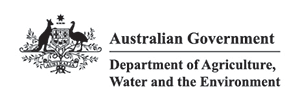Setting the PACE in spraying developments

This project is supported by funding from the Australian Government Department of Agriculture, Water and the Environment as part of its Rural R&D for Profit programme.
There’s a lot of work going into the quest for a better agrichemical spraying system for Australian vineyards.
A project supported by Wine Australia and Horticulture Innovation Australia, through funding from the Australian Government Department of Agriculture, Water and the Environment as part of its Rural R&D for Profit programme, at the University of Queensland (UQ) brings together local researchers, a concept born in the UK, software developments from the US, equipment provided by an Australian company, and the support of wine companies and viticulturists in three states.

Walter Campbell (Vinland Estate, Granite Belt) driving his tractor with Pix4D imaging system mounted on a jib.
The aim is to develop new technology based around sensors that can monitor the presence or absence of vine canopy and automatically adjust the spray accordingly.
The work is being driven by Senior Research Fellow Dr Andrew Hewitt and Research Fellow Dr Chris O'Donnell in UQ’s School of Agriculture and Food Sciences, who believe an automated approach could potentially bring savings of 10–20 per cent of spray application volume.
The idea for a Pesticide Adjusted for the Canopy Environment (PACE) system grew out of research in apple orchards in England, which showed that, when sprays are applied at the fixed dose rate recommended on agrichemical product labels, there is a greater than six-fold variation in average chemical deposits at different growth stages due to variation in tree size and canopy density.
That discovery inspired further work in the UK and the US using LiDAR (Light Detection and Ranging) sensors to collect detailed data on a canopy structure to inform spray patterns. What the UQ team is looking to add is a validation system to provide feedback on the dosing levels and make immediate adjustments.
‘You could get LiDAR to do the mapping then program the sprayer to go back and spray according to the data, but a more efficient way is to build in a validation system that can do that automatically’, Dr O’Donnell said.
He and Dr Hewitt saw an example of the potential when they visited collaborating researchers at the US Department of Agriculture’s Application Technology Research Unit in Ohio.
‘In an orchard we drove past a couple of tufts of weeds about a metre high and the very bottom nozzle on the left hand side of the sprayer detected them and activated a single stream straight onto the tufts’, Dr O’Donnell said.
‘That was pretty impressive. It exceeded expectations when we saw that kind of accuracy.’
The tricky part now is programming the software to suit vineyards (the algorithms, Dr O’Donnell notes, are pretty complex) so that all viticulturists will have to do is drive a tractor between the rows.
Trials are being carried out in Stanthorpe, Langhorne Creek and the Murray Valley, using a LiDAR system from the US and spraying equipment provided by Silvan Australia. ‘We have some really good relationships going with several growers’, Dr O’Donnell said.
And the project continues to be multicultural and multidisciplinary. Alongside the UQ and US researchers it has involved interns from Brazil and China, an American spray consultant, and a Canadian specialist in computational fluid dynamics who is interested in air flows over vineyards.